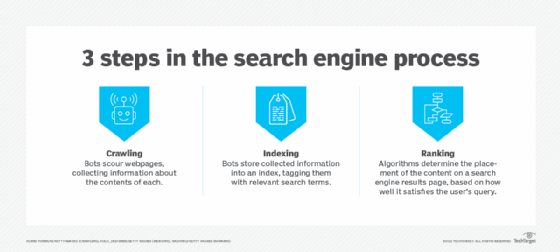One of the techniques used when looking up the information you want to know using
a search engine
such as Google or Yahoo! is the “What is search”. By adding “〇〇What is” after a keyword, you can easily find out what the keyword is, so this is one of the commonly used methods.
However, if you cannot find the information you are looking for or want to know more in-depth information, there are many search techniques other than the “What is search” method. By changing the method depending on the content to be searched, more effective searches can be made.
This time, we will introduce techniques and methods for using search engines efficiently to find the information you want more accurately.
What is a search engine?
A search engine is software accessible on the Internet that searches databases of information according to user questions. Search engines provide users with a list of the most relevant information based on the keywords they want to search for. Currently, the most popular and well-known search engine is Google. There are various other search engines on the market, such as Yahoo! and Microsoft’s Bing. Each search engine uses its own
algorithm
to display search results based on information such as what search results were preferred by users who entered the same keywords. Therefore, even when entering the same keyword, different search engines have the potential to provide different results, and many users choose different search engines depending on the information they want to know.
Search engines can be accessed in browsers from various devices such as computers, smartphones, and tablets. By entering specific keywords into the search window at the top of your browser, you will be able to find the information you are looking for.

The basic method is “Search”
When you use a search engine and enter the term you want to know and “Toha” into the search box, it is called “Toha search.”
For example, if you enter search, major search engines such as Google and Yahoo! will be displayed at the top. So, what happens when you type “What is search?”
The results will show you a site that will tell you what the search is about. This method is used differently depending on whether you want to know the meaning of the word or the background and meaning behind the word.
“Searching for” is a basic technique that is loved by many users. This is a basic technique, so please make use of it when searching.

7 useful search techniques to know
To effectively use search engines such as Google and Yahoo!, you need to use various search techniques that can be used to improve the accuracy of search results. This is a useful technique for users who say “I can’t find the information I want to know” or “I want to know more about the search content.”
First of all, there is a phrase search. You can also use other Boolean operators used in programming, such as AND, OR, and NOT, to more accurately search for the information you need.
We will also introduce techniques using the * (asterisk) symbol, which are effective even when the content you want to search for is vague, and search methods specific to social media, so please use them as a reference.

phrase search
Phrase searching is one of the most frequently used and effective search techniques. By entering the term you want to search, you can search for specific content that exactly matches the keyword.
However, it also has the potential to exclude search results other than that keyword, so there is a risk if you want to see related results as well. When entering your search, search for fixed phrases such as book publications to find the best results.

AND search
AND is a search method that tells the system that both terms are required, such as when you want to search for multiple keywords. It displays results that include all the specified keywords, so you can use it when you want to search for multiple items.
When entering, enter AND between the keywords you want to search, such as “〇〇AND〇〇”.
Example: Smartphone AND charge: Regarding smartphone charges.
If you search only for smartphones, only smartphone information will be displayed as results. Regarding fees, various fees and usage fees are displayed for vague fees. By using an AND search, you can narrow down your search to only the information you are looking for, about smartphone charges.

OR search
OR searches for any of the terms such that each search result contains at least one term. When entering, enter OR between the keywords you want to search, such as “〇〇OR〇〇”. Very useful when looking up terms that have synonyms.
Example: Children OR Kids: Includes children or kids.
Using the example above, children and kids are synonymous, but the search results will show different results. If you want to search for information other than children or information that clearly states kids, you can use OR to search for information on children and kids in general.

NOT search
NOT is a method of excluding keywords that include a specific term and limiting the search by adding NOT in front of the search term to be excluded from the search. When entering, enter NOT between the keywords you want to search, such as “〇〇NOT〇〇”. However, be careful as there is a risk of excluding related content as well.
Example: child NOT school: anything other than the child’s school
When you search for children, a lot of information about school and lessons will be displayed as a result. This is useful when you want to search for information only about children, without school information.

Similar search (wildcard)
You can search for terms that match part of your keyword. It is also effective when you can only remember part of the content. When entering, enter the * (asterisk) mark between the keywords you want to search, such as “〇〇*〇〇”. This is used to specify a string of zero or more characters that matches the part marked *.
Example: Cat*: Cat, matches cat 〇〇 *Cat: Cat, matches 〇〇 cat Ne*ko: Cat, matches 〇〇 cat *Cat*: Cat, 〇〇 cat〇 Matches 〇
In addition to the examples above, by using the * symbol when you only know part of the lyrics, you can search to find the song title or the full text of the lyrics. This is a useful search technique when searching for ambiguous content.

Social media tag search
Many search engines allow you to search for trending topics across social media by typing the @ or # symbol.
When searching for information on SNS etc. on the Internet, you can search for information specific to that SNS by adding the name of the SNS such as @Instagram after the keyword.
Similarly, you can use the # (hashtag) symbol to search for information using # tags on Instagram and Twitter.
Example: 〇〇@Instagram: Things about 〇〇 posted on Instagram Twitter #〇〇: Things about 〇〇 tagged # on Twitter
If you want to use social media to gather information, you don’t have to go to the trouble of opening and searching each SNS, and searching becomes easier by using the @ mark and # tag. This is a useful search technique when you want to know information tagged with 〇〇 on Instagram.

Date function search
Many search engines offer the ability to limit searches by the creation date of a web page. This is useful when you want to search for a specific topic. It is also a very useful technique when searching for event information, etc.
Example: April 1, 2018: Events that occurred on April 1, 2018, days of the week, etc.
You can guess what happened from the April 2018 calendar. For example, April 1, 2018 is also the day that Shohei Ohtani makes his first pitch in the major leagues.
This is useful when you want to know what happened on a particular date.

Improved search method
If you have searched for the information you want by entering keywords in the search window, but are not satisfied with the search results, you need to improve your search method.
Use the search techniques mentioned above and see if you can adjust them to get better search results so you can get to the information you want as quickly as possible.
Too few hits
Even if you enter a keyword and search, the number of hits may be small. If you don’t have enough information to refer to, there is a risk that your future actions will be limited. To increase the number of hits and get more information, we recommend trying out the following example for a basic introduction.
- Search using OR between keywords and synonyms or alternative terms
- Check for spelling mistakes
- Unblock search
Too many hits
Too few hits is a concern, but too many results in information overload, and it takes time to find the information you really want to know. If you feel like you’re getting too many hits, try the example below.
- Change to narrower keywords
- Narrow down to limited information by using NOT etc.
- Do not use AND etc. in search

summary
Nowadays, you can obtain a variety of information using the Internet. However, in order to know whether it is the information you really want to know or whether it is the correct answer, you need to carefully examine the huge amount of information. For that reason, it might be a good idea to take a long time and research each one one by one.
However, by using search techniques, you can accurately and precisely display the information you are looking for as search results. Controlling information is useful both when you have time and when it comes to business. If you don’t see the search results you expected, try searching using search techniques.

